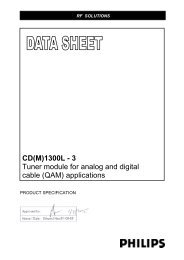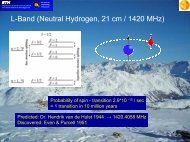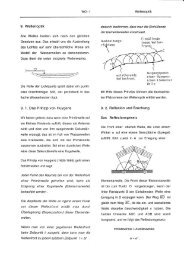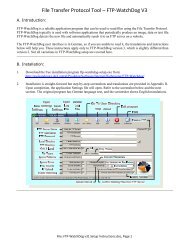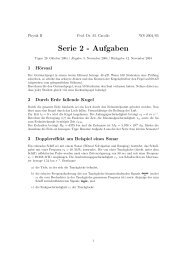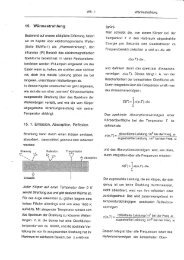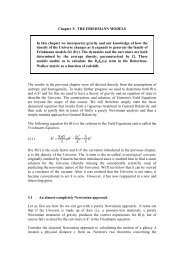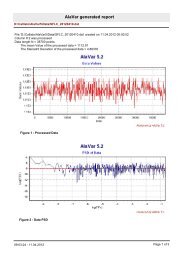here - Institute for Astronomy Umleitung
here - Institute for Astronomy Umleitung
here - Institute for Astronomy Umleitung
You also want an ePaper? Increase the reach of your titles
YUMPU automatically turns print PDFs into web optimized ePapers that Google loves.
Title: Science Case<br />
Reference: MUSE-MEM-SCI-052<br />
Issue: 1.3<br />
Date: 04/02/2004<br />
Page: 99/100<br />
parameters, which are generally not easy to quantify, such as the accuracy of sky subtraction,<br />
PSF stability, minimization of diffuse light, etc. However, optimizing such key aspects of the<br />
instrument per<strong>for</strong>mance <strong>for</strong>ms the very basis upon which MUSE has been designed and shall<br />
be built, and we are confident that this will ultimately ensure the achievement of our aims.<br />
8.3. High spatial resolution IFU<br />
In contrast to wide-field IFUs, which are not numerous, t<strong>here</strong> is a growing number of AOassisted<br />
IFUs in development or in operation. In the following table we show the main<br />
competitors (operating or planned) <strong>for</strong> 8m telescopes.<br />
Instrument GNIRS+IFU NIFS OSIRIS SINFONI MUSE<br />
Telescope Gemini S Gemini N Keck VLT VLT<br />
Multiplex type Slicer IFU Slicer IFU Lenslet IFU Slicer IFU Slicer IFU<br />
No. spatial elements 620 2000 1000 1000 90,000<br />
Spatial sampling,<br />
arcsec/pixel<br />
0.07x0.07 0.04x0.10 0.02<br />
0.05<br />
0.10<br />
FOV (arcsec) 2.2x1.5 3.0x2.9 1.28x0.32<br />
3.20x0.80<br />
6.40x1.60<br />
0.025<br />
0.10<br />
0.25<br />
0.8x0.8<br />
3.2x3.2<br />
8x8<br />
0.025<br />
7.5x7.5<br />
Spectral elements 1000 2000 1300 2000 4000<br />
Spectral resolutions 1800, 6000 5300 3800 4000 3000<br />
Wavelength range 0.9-2.5 µm 0.9-2.5 µm 1-2.5 µm 1-2.5 µm 0.46-0.93 µm<br />
Detector 1kx1k InSb 2k x 2k<br />
HgCdTe<br />
2k x 2k 2k x 2k 24x4kx4k<br />
CCD<br />
Date comm. 2003 (NS) 2005 2004 2004 2011<br />
Table 8-2: Existing or planned AO assisted IFU on 8m class telescopes<br />
In the following we have focused our comparison with SINFONI which is available at VLT,<br />
but most of what will follow is also be valid <strong>for</strong> the other instruments. We limit our<br />
comparison to the 25 milli-arcsec sampling of SINFONI.<br />
One can then per<strong>for</strong>m the same computation as in previous subsection. This gives a gain of 90<br />
in Etendue 10 and 135 in 3D power <strong>for</strong> MUSE with respect to SINFONI. But the key<br />
parameter is the spatial resolution given by the AO system. It is well known that AO<br />
per<strong>for</strong>mance is much better in the infrared than in the optical. The SINFONI predicted<br />
per<strong>for</strong>mances are quite good, with 50% Strehl ratio in the K band. However, this per<strong>for</strong>mance<br />
is obtained only with a bright, natural on-axis guide star (V




